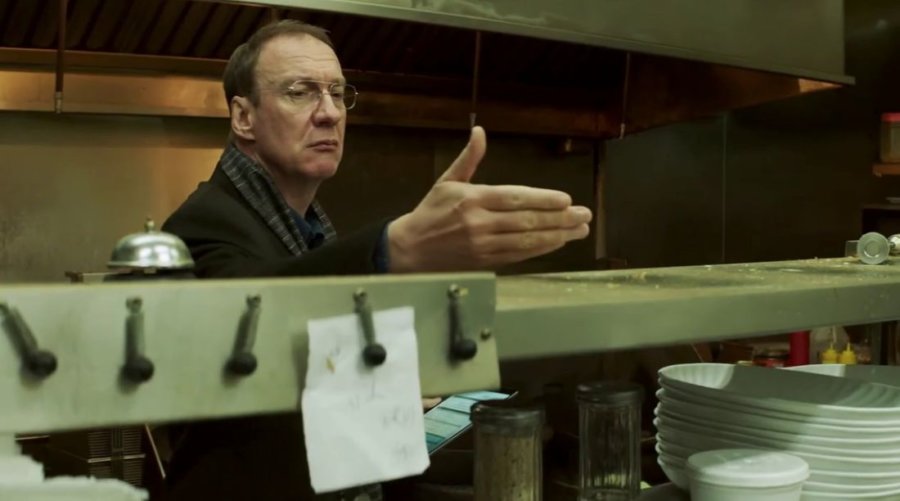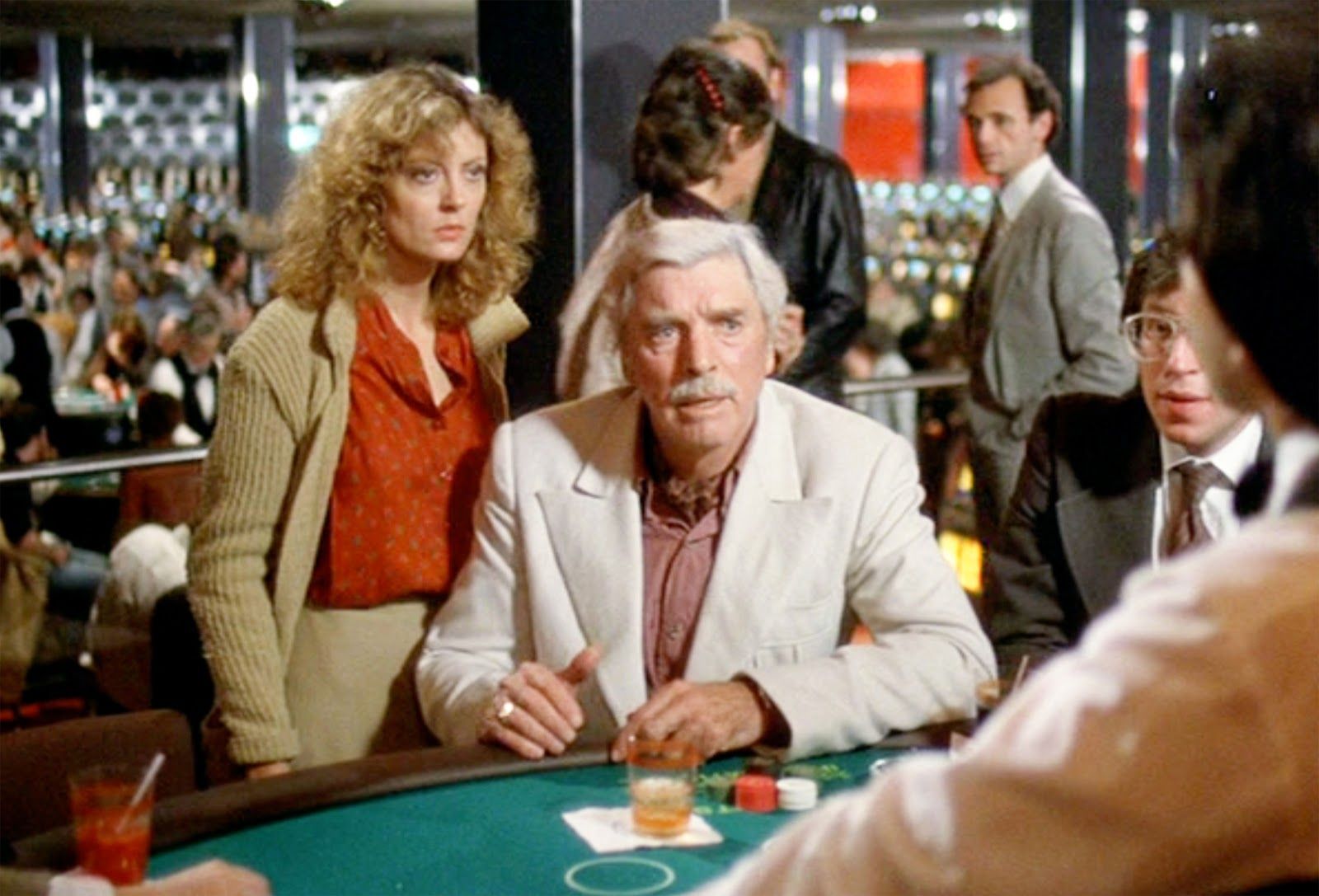
“Repeat after me,” a union organizer directs a roomful of female garment workers in a key scene from writer-director Rubaiyat Hossain’s docu-drama Made in Bangladesh: “Worker’s rights are human rights… [And] women’s rights are human rights.” Through a First World lens this dialog may appear a bit heavy-handed, but the sad fact remains there are still places in this world where these truths are not necessarily held to be self-evident.
The central character is a headstrong 23 year-old named Shimu (Rikita Nandini Shimu). To avoid a forced child marriage, she fled her home village when she was a pre-teen and now lives in Dhaka with her husband of choice Reza (Shatabdi Wadud). Like many young women in the capital, Shimu has found gainful employment in the garment industry. That is not to say she has a dream job; in point of fact she works in a sweatshop.
In addition to putting up with the low wages, long hours, unsafe conditions and spotty overtime compensation Shimu and her fellow workers regularly face sexual harassment, workplace intimidation, and all the other systemic maladies of a patriarchal society. Still, it’s a paycheck; with her husband chronically unemployed, somebody has to pay the rent.
After an explosion and fire kills a fellow employee, Shimu is approached by an investigative journalist, who after hearing her account of working conditions steers her to a local union organizer (Shahana Goswami). Shimu embarks on a mission to unionize her factory. With obstacles at every turn (including at home) she has her work cut out for her.
While it is a familiar narrative (especially if you have seen Norma Rae, a film the director has cited as an inspiration, along with the real-life story of a woman named Daliya Akhter who is a factory worker and union leader) Hossain offers us a 21st Century feminist heroine who challenges the stereotype of the subservient Muslim woman and reminds us that the final chapter in the struggle for worker’s rights is yet to be written.
“Made in Bangladesh” is currently streaming via Virtual SIFF Cinema.
Overtime bonus! Here are 10 essential films that embody the spirit of Labor Day:

Blue Collar (Amazon Prime) – Director Paul Schrader co-wrote this 1978 drama with his brother Leonard. Richard Pryor, Harvey Keitel and Yaphet Kotto portray Motor City auto worker buddies tired of getting the short end of the stick from both their employer and their union. In a fit of drunken pique, they pull an ill-advised caper that gets them in trouble with both parties, ultimately putting friendship and loyalty to the test. Akin to Elia Kazan’s On the Waterfront, Schrader subverts the standard black-and-white “union good guy, company bad guy” trope with shades of gray, reminding us the road to Hell is sometimes paved with good intentions. Great score by Jack Nitzsche and Ry Cooder, with a memorable theme song featuring Captain Beefheart (“I’m jest a hard-woikin’, fucked-over man…”).

El Norte (Amazon Prime) – Gregory Nava’s portrait of Guatemalan siblings who make their way to the U.S. after their father is killed by a government death squad will stay with you after credits roll. The two leads deliver naturalistic performances as a brother and sister who maintain optimism, despite fate and circumstance thwarting them at every turn. Claustrophobes be warned: a harrowing scene featuring an encounter with a rat colony during an underground border crossing is nightmare fuel. Do not expect a Hollywood ending; this is an unblinking look at the shameful exploitation of undocumented workers.

The Grapes of Wrath (Amazon Prime) – I’m stymied for any hitherto unspoken superlatives to ladle onto John Ford’s powerful 1940 drama (adapted from John Steinbeck’s novel). Suffice it to say, this is the quintessential film about the struggle of America’s salt of the earth during the Great Depression. Perhaps we can take comfort in the possibility that no matter how bad things get, Henry Fonda’s unforgettable embodiment of Tom Joad will “…be there, all around, in the dark.” Ford followed up with the Oscar-winning How Green Was My Valley (1941) another drama about a working class family (set in a Welsh mining town).

Harlan County, USA (Criterion Channel, HBO Max)– Barbara Kopple’s award-winning film is not only an extraordinary document about an acrimonious coal miner’s strike in Harlan County, Kentucky in 1973, but is one of the best American documentaries ever made. Kopple’s film has everything that you look for in any great work of cinema: drama, conflict, suspense, and redemption. Kopple and crew are so deeply embedded that you may involuntarily duck during a harrowing scene where a company-hired thug fires a round directly toward the camera operator (it’s a wonder the filmmakers lived to tell this tale).

Made in Dagenham (Amazon Prime) – Based on a true story, this 2011 film stars the delightful Sally Hawkins as Rita O’Grady, a working mum employed at the Dagenham, England Ford plant in 1968. She worked in a run-down, segregated section of the plant where 187 female machinists toiled away for a fraction of what male employees were paid; the company justified the inequity by classifying female workers as “unskilled labor”.
Encouraged by her empathetic shop steward (Bob Hoskins), the initially reticent Rita finds her “voice” and surprises family, co-workers and herself with a formidable ability to rally the troops and affect real change. An engaging ensemble piece (directed by Nigel Cole and written by William Ivory) with a standout supporting performance by Miranda Richardson as a government minister.

Matewan (Blu-ray only) – This well-acted, handsomely mounted drama by John Sayles serves as a sobering reminder that much blood was spilled to lay the foundation for the labor laws we take for granted in the modern workplace. Based on a true story, it is set during the 1920s, in West Virginia. Chris Cooper plays an outsider labor organizer who becomes embroiled in a conflict between coal company thugs and fed up miners trying to unionize.
Sayles delivers a compelling narrative, rich in characterizations and steeped in verisimilitude (beautifully shot by Haskell Wexler). In addition to Cooper, you’ll recognize many Sayles regulars in this fine ensemble cast (David Strathairn, Mary McDonnel, et.al.). The film is also notable for a nicely curated Americana soundtrack.

Modern Times (Amazon Prime) – Charlie Chaplin’s 1936 masterpiece about man vs. automation has aged well. This probably has everything to do with his embodiment of the Everyman. Although referred to as his “last silent film”, it’s not 100% so. There’s no dialogue, but Chaplin finds ingenious ways to work in lines (via technological devices). His expert use of sound effects in this film is unparalleled, particularly in a classic sequence where Chaplin, a hapless assembly line worker, literally ends up “part of the machine”. Paulette Goddard (then Mrs. Chaplin) is on board for the pathos. Brilliant, hilarious and prescient.

Norma Rae (Hulu)– Martin Ritt’s 1979 film about a minimum-wage textile worker (Sally Field) turned union activist helped launch what I refer to as the “Whistle-blowing Working Mom” genre (Silkwood, Erin Brockovich, etc). Field gives an outstanding performance (and deservedly picked up a Best Actress Oscar) as the eponymous heroine who gets fired up by a passionate labor organizer from NYC (Ron Leibman, in his best role). Inspiring and empowering, bolstered by a fine screenplay (by Irving Ravetch and Harriet Frank, Jr.) and a great supporting cast (including Beau Bridges, Pat Hingle and Barbara Baxley).

On the Waterfront (Amazon Prime) – “It wuz you, Chahlee.” The betrayal! And the pain. It’s all there on Marlon Brando’s face as he delivers one of the most oft-quoted monologues in cinema history. Brando leads an exemplary cast that includes Rod Steiger, Lee J. Cobb, Karl Malden and Eva Marie Saint in this absorbing portrait of a New York dock worker who takes a virtual one-man stand against a powerful and corrupt union official. The trifecta of Brando’s iconic performance, Elia Kazan’s direction, and Budd Schulberg’s well-constructed screenplay adds up to one of the finest American social dramas of the 1950s.

Roger and Me (Amazon Prime) – While our favorite lib’rul agitprop director has made a number of films addressing the travails of wage slaves and ever-appalling indifference of the corporate masters who grow fat off their labors, Michael Moore’s low-budget 1989 debut film remains his best (and is on the list of the top 25 highest-grossing docs of all time).
Moore may have not been the only resident of Flint, Michigan scratching his head over GM’s local plant shutdown in the midst of record profits for the company, but he was the one with the chutzpah (and a camera crew) to make a beeline straight to the top to demand an explanation. His target? GM’s chairman, Roger Smith. Does he bag him? Watch it and find out. An insightful portrait of working class America that, like most of his subsequent films, can be at once harrowing and hilarious, yet hopeful and humanistic.
Related posts:
Capital in the Twenty-First Century
Kleptocracy Now: A Top 10 List
Sing us out, Billy Bragg…
More reviews at Den of Cinema
—Dennis Hartley















